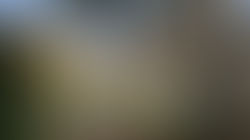
Schwabing District Tour
Let's go to Schwabing – stylish, lively, full of history.
Looking for more than just sightseeing? Our district tour will show you the real Schwabing: Art Nouveau, artistic history, trendy flair, and hidden places with soul. Immerse yourself in Munich's most creative district – charming, surprising, and unforgettable.
Book your tour now and experience Schwabing in a new way!
When?
by appointment!
Your tour, your appointment!
90 - 120 minutes
Extension possible
220.00
up to 20 people
approx. 2.5 km
very easy route
Münchner Freiheit / Karstadt
or by arrangement
Art, culture and lifestyle
Schwabing is not a place, but a state…
...said Franziska Gräfin zu Reventlow at the turn of the century, and "In Schwabing there's a pub that must be something special," the Munich band Spider Murphy Gang sings about this situation. What's the story behind this, certainly Munich's most famous district?
Schwabing – the ancient lady
Schwabing is also considerably older than Munich itself, but for centuries it eked out a rather insignificant, village-like existence. It wasn't until the 19th century that it began to flourish. While the newly developed Maxvorstadt district was simply too expensive, properties could still be purchased here at reasonable prices. The small village grew rapidly and was elevated to city status just four years before its incorporation into Munich.
Schwabing – always in…
It was the turn-of-the-century era that went down in history as the "Schwabing Bohemians." 1,180 painters and sculptors lived in Schwabing around the turn of the century. Although many of the important residential addresses, cafés, and artists' hangouts were technically located in the neighboring Maxvorstadt, they were strongly associated with Schwabing, this new, culturally and intellectually "state." They came from all over to settle in Schwabing, deliberately behaving in an "unbourgeois" manner, and finally be counted by the people of Munich among the "Schwabing rascals."
Schwabing – Munich’s answer to Paris
At the turn of the century, even Moscow, Paris, and Berlin had to take a back seat to Munich as Europe's art capital. It was here that artists, writers, and poets broke free from the rigid bourgeois life of the German Empire. Personalities such as the playwright Frank Wedekind, the "Simplicissimus" publisher Albert Langen, the famous "Alter-Simpl" restaurant innkeeper Kathi Kobus, the poet Joachim Ringelnatz, the writers Heinrich and Thomas Mann, Stefan George, Rainer Maria Rilke, and the painters of the "Blue Rider" group: Alfred Kubin, Lovis Corinth, and Paul Klee, to name just a few.
The Schwabing myth lives on!
The era of the "Schwabing Bohemians" ended abruptly with the outbreak of the First World War. Both after the First World War and after the devastation of the Second, there were almost frantic attempts to revive the "Schwabing myth," but these efforts were unsuccessful. While there was a genuine nightlife here during the American occupation, and the " Schwabinger Gisela " became one of Munich's most famous restaurants, the great Schwabing era could never be revived in this form. The unrest of the 1960s was almost inevitable here in Schwabing, as the anti-authoritarian movement referred to the anti-bourgeois tendencies of the Bohemians at the turn of the century.
But the “Schwabing myth” somehow lives on, and every generation that has once lived here almost has to say about Schwabing: “This is no longer my Schwabing.”
It has always been this way, and it will always be this way…


















